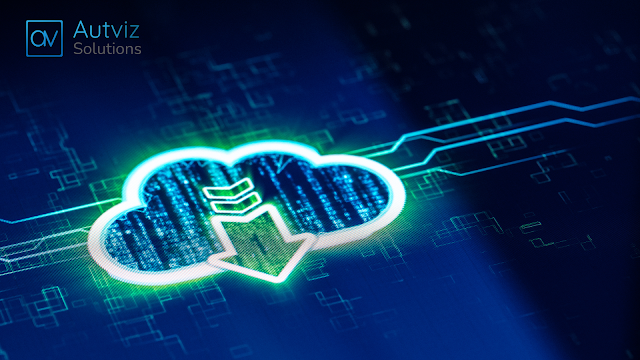Generative AI: Developer Tools & Infrastructure Explained
In recent years, Generative AI has gone from being a futuristic concept to a practical reality, transforming how we create text, images, audio, video, and even code. But behind the creative magic lies a powerful set of tools and infrastructure that make it all possible, especially for Generative AI developers.
Whether you're a tech enthusiast, a startup founder, or part of a development team, understanding the core tools and infrastructure behind generative AI is key to building smarter and faster applications. This blog breaks it all down in a simple and approachable way.
Why Developer Tools and Infrastructure Matter
Generative AI isn’t just about powerful models—it’s about how developers interact with them. Building with generative AI requires tools for:
Accessing pre-trained models
Training and fine-tuning your own models
Managing large datasets
Running models efficiently
Scaling applications securely
Without the right tools and infrastructure, development can become slow, expensive, and complex. So let’s explore the main components developers need to work with generative AI effectively.
1. Pre-trained Models and APIs
The easiest way to get started with generative AI is by using pre-trained models via cloud-based APIs. These allow developers to plug into powerful AI models without building or training them from scratch.
Popular APIs and Platforms:
OpenAI (GPT, DALL·E) – For text and image generation
Google Cloud AI – Offers Vertex AI with foundation models
Hugging Face – Hosts open-source models for text, vision, and audio
Replicate – Run ML models in the cloud with simple APIs
These platforms let you generate content in real time, making it perfect for chatbots, creative tools, and automation.
2. Developer Libraries & SDKs
To integrate generative AI into applications smoothly, developers often rely on SDKs (Software Development Kits) and libraries. These act as the bridge between your code and the AI model.
Most Used Libraries:
Transformers by Hugging Face – Great for using and fine-tuning NLP models
LangChain – A Python framework for building applications with LLMs
OpenAI SDKs – Official libraries for Node.js, Python, and more
Diffusers – For image and audio generation with stable diffusion models
These tools simplify the complex processes of tokenization, generation, fine-tuning, and output formatting.
3. Infrastructure for Training and Inference
When you’re building a custom generative model or fine-tuning an existing one, you need robust infrastructure. Training these models requires high-performance GPUs, lots of memory, and scalable storage.
Key Infrastructure Tools:
Cloud Platforms – AWS, Google Cloud, and Azure offer GPU instances
NVIDIA GPUs – Essential for high-speed model training and inference
TPUs (Tensor Processing Units) – Specialized chips for AI, available via Google Cloud
Docker & Kubernetes – Used for containerizing and scaling AI applications
Cloud infrastructure allows you to rent computing power on demand instead of investing in expensive hardware.
4. Model Hosting & Deployment Platforms
Once your AI model is trained or integrated, you’ll need a reliable way to host and deploy it for real-time use. This is where AI model serving tools come into play.
Deployment Solutions:
TorchServe – A tool to deploy PyTorch models at scale
Triton Inference Server – NVIDIA’s solution for deploying AI models
FastAPI – Lightweight and fast backend for serving AI endpoints
Modal & Replicate – Easy tools to run and scale ML apps in the cloud
These tools help ensure your app is always available, low-latency, and secure when users are generating content.
5. Dataset Management & Training Pipelines
Data is the fuel of generative AI. Developers need tools to collect, clean, label, and manage datasets—especially if they’re training or fine-tuning models.
Useful Tools:
Labelbox & Prodigy – For data labeling and annotation
Weights & Biases – For tracking experiments and model performance
DVC (Data Version Control) – For dataset versioning and sharing
Apache Airflow – For automating machine learning workflows
Managing datasets well helps improve the quality and reliability of generated outputs.
6. Monitoring and Optimization
Once your generative AI is up and running, the job isn’t over. Developers need to monitor performance, spot issues, and optimize the system for speed, accuracy, and cost.
Key Areas to Monitor:
Latency – How fast your model responds
Token usage – Especially when using API-based models
Drift detection – When model performance drops over time
User feedback – Useful for improving model output quality
Tools like Prometheus, Grafana, and built-in analytics from platforms like OpenAI or AWS can help here.
Final Thoughts
Generative AI is opening doors to creativity and automation we’ve never seen before. But it’s the developer tools and infrastructure that turn this potential into reality. From powerful APIs and libraries to scalable GPUs and deployment platforms, every piece plays a role in building AI that’s useful, fast, and reliable.
Whether you're creating an AI writer, a design tool, or a personalized chatbot, understanding the ecosystem of generative AI tools will help you build smarter and better.
Want to dive deeper into a specific area like model fine-tuning or AI app design? Let’s explore that next!



Comments
Post a Comment